Edward M. Murphy
Although the Pontiac name did not adorn a car until 1926, the marque dates back to 1893. Edward M. Murphy founded the Pontiac Buggy Company in Pontiac, Michigan, a town which had taken its name from a mighty Indian chief who, 150 years before, had banded the Ottawas, Chippewas, Pottawattomis and Miamis into a powerful confederation.
Oakland
Murphy went into motor car manufacturing in 1907, however, he called his new company
Oakland, and it was not until the middle 1920s that the Pontiac name was used on a car, when General Motors had taken over. The Oakland had pioneered Duco cellulose finish and four-wheel braking in a medium-priced car, and it was as a low-priced running-mate for this successful model that the Pontiac was launched at the January 1926 New York Auto Show.
The Chief of the Sixes
'The Chief of the Sixes' was an all-new design by Ben H. Anibal, formerly chief engineer of
Cadiliac, to the specification of Al R. Glancy, General Manager of Oakland. But the Pontiac proved so popular that it toppled the
Oakland from favour. Sales of this $825 side-valve 3064cc six totalled 76,742 in the fitst year of production, 140,000 in 1927 and 210,890 in 1928; by 1931, the
Oakland was dead.
The Daylight Plant
Shortly after the launching of the Pontiac, it was apparent that the original factory in the centre of Pontiac township was too small, and a 246-acre site on the northern edge of the city was acquired for expansion. The new buildings incorporated an extensive area of glass roofing to provide the maximum natural illumination, which earned the factory the nickname of the 'daylight plant'.
The success of the Pontiac is all the more remarkable when it is considered that this was the only marque to be created (rather than acquired) by General Motors and to have survived more than a couple of seasons. Only ninety days after ground was broken on the new factory site, cars were leaving the finished building, an occurrence which was regarded as something of a miracle by the construction industry. Not only that, but the factory was linked to a new Fisher Body plant by a closed-in overhead bridge, which eliminated the usual problem of having to bring in bodies by truck.
The Buick Marquette
The Pontiac was redesigned in 1930, and fitted with an ohv 3277cc six-cylinder engine which it had, among many other features, in common with the Marquette, a none-too-successful light-six recently introduced by Buick. While the Marquette was shortlived, however, the Pontiac continued to flourish. The last Oakland had been a V8 based on the Oldsmobile Viking; for 1932, this model, too, became a Pontiac. Here, however, even the magic of the Pontiac name failed to do anything for this 4104cc flop, which was allowed to fade away unmourned.
Harry J. Klingler
Its successor was a complete contrast, the first American straight-eight to sell at less than $600. Its 3654cc power unit developed 77 bhp, giving a top speed of almost 80 mph. It helped Pontiac sell 89,000 cars and gain fifth place on the American market; the new eight even supplanted the six-cylinder Pontiac for a while. Then, in 1933, a new General Manager, Harry J. Klingler, took over at Pontiac, and it was decided to reinstate the six-cylinder model, which had only been suspended for a short while.
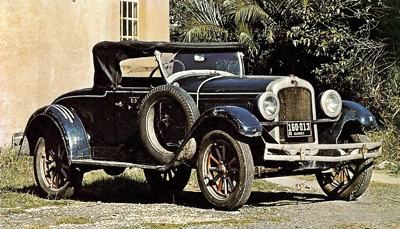 The first Pontiac, a 1925 Six Roadster.
The first Pontiac, a 1925 Six Roadster.
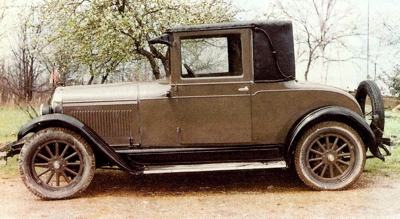 1926 Pontiac Coupe - the 'Chief' of the Sixes.
1926 Pontiac Coupe - the 'Chief' of the Sixes.
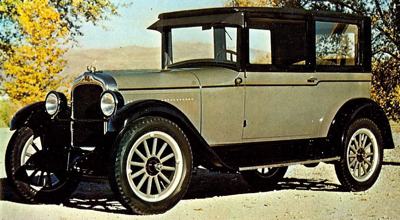 1926 Pontiac 6-27 Model.
1926 Pontiac 6-27 Model.
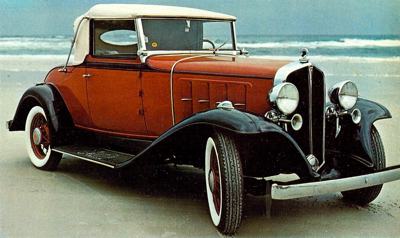 1933 Pontiac Cabriolet V8 Sport.
1933 Pontiac Cabriolet V8 Sport.
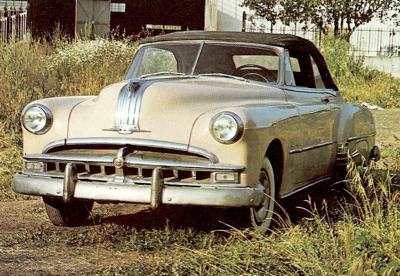 1948 Pontiac Cabriolet 2 door convertible.
1948 Pontiac Cabriolet 2 door convertible.
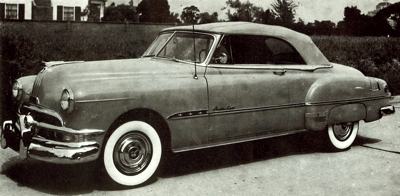 1951 Pontiac Eight Convertible.
1951 Pontiac Eight Convertible.
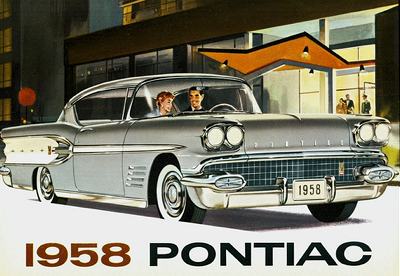 1958 Pontiac.
1958 Pontiac.
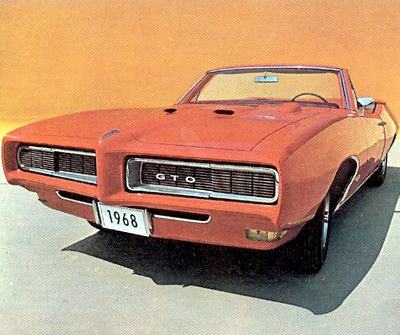 1968 Pontiac GTO. It was available with a range of V8's, from 269 bhp to 365 bhp.
1968 Pontiac GTO. It was available with a range of V8's, from 269 bhp to 365 bhp.
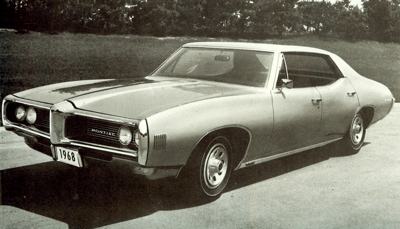 1968 Pontiac Le Mands Hardtop.
1968 Pontiac Le Mands Hardtop.
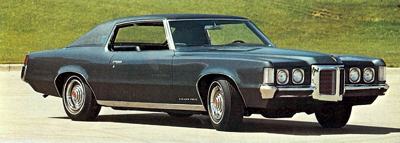 1969 Pontiac Grand Prix V8.
1969 Pontiac Grand Prix V8.
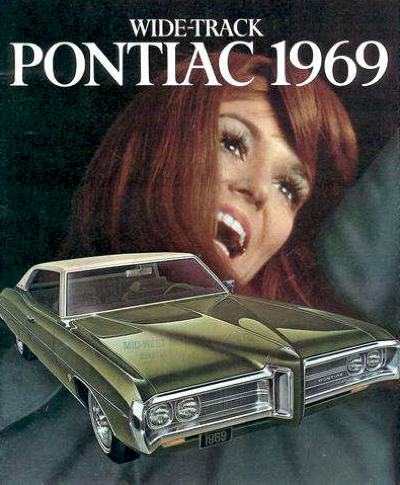 1969 Pontiac Grande Parisienne.
1969 Pontiac Grande Parisienne.
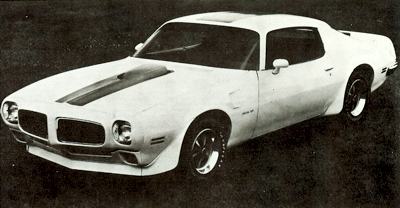 1971 Pontiac Firebird Trans-Am Coupe.
1971 Pontiac Firebird Trans-Am Coupe.
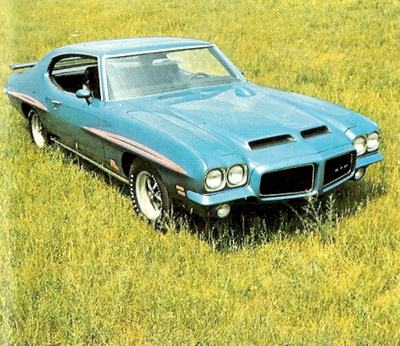 1971 Pontiac GTO Judge.
1971 Pontiac GTO Judge.
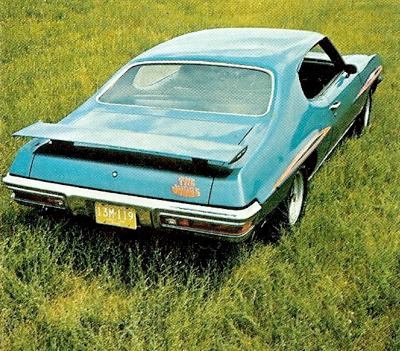 1971 Pontiac GTO Judge.
1971 Pontiac GTO Judge.
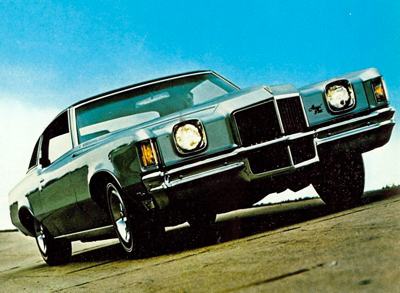 1972 Pontiac Grand Prix V8.
1972 Pontiac Grand Prix V8.
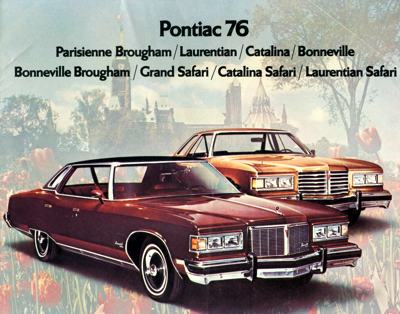 1976 Pontiac Brochure.
1976 Pontiac Brochure.
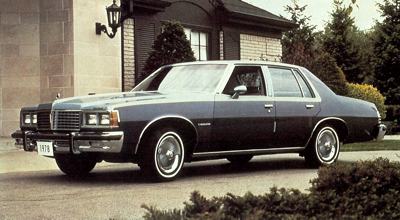 1978 Pontiac Catalina sedan, powered by a 3.8 liter V6.
1978 Pontiac Catalina sedan, powered by a 3.8 liter V6.
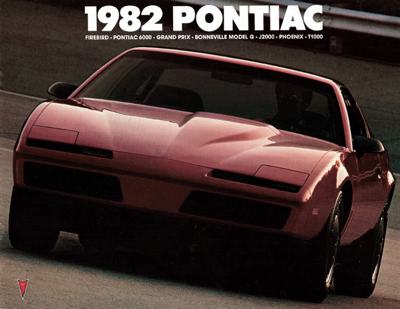 1982 Pontiac Firebird.
1982 Pontiac Firebird.
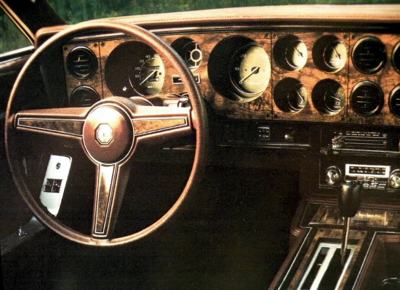 1982 Pontiac Grand Prix Interior.
1982 Pontiac Grand Prix Interior. |
Fisher No Draft Ventilation
The straight-eight featured, in common with other General Motors models, hinged quarter-lights in front and rear windows, a simple innovation which was hailed as a great technological breakthrough: 'Not a hair out of place ... this serenely confident young lady has just stepped from her car. She has no fear that her hair was tousled or her gown ruffled by unkind breezes, for her car has Fisher No Draft Ventilation, latest and greatest contribution to personal appearance and comfort-to health and safety. No Draft Ventilation, in any weather, provides fresh air without chilling drafts on any passenger. In stormy weather it keeps the interior of windows and wind shield safely fog-free. And in appearance it sets the new style-visibly identifies a car as modern'. Only ten years earlier most of the cars on the roads of the world had been open tourers.
Dubonnet-type Independent Front Suspension
In 1934 there was a slightly more positive technical advance in the adoption of Dubonnet-type independent front suspension, which followed a design which had been launched at the Paris Salon four years earlier. Commented The Motor: 'There is a coil spring for each wheel, enclosed in a cylinder which is hinged to the chassis frame. The stub axle on which the wheel turns is carried by a trailing arm which is journalled in the cylinder and is fitted with an interior projection engaging with the coil spring. An extra link is also used to steady the system against brake reactions. A unique feature of the Dubonnet plan is that all the steering gear is on the frame, so that it is totally unaffected by up-and-down wheel movements'. For some reason which we cannot fathom, the Dubonnet suspension was called 'knee-action springing'.
All-steel 'turret-top' bodywork was another feature of the 1934 Pontiac line while, for 1935, they acquired 'Silver Streak' styling and radiator grilles. The Motor seemed quite impressed: 'These cars have extremely pleasing lines, following the latest practice in regard to radiator grilles, wing and head design. Very smooth riding is provided by the combination of knee-action front suspension and long semi-elliptic springs at the rear. The softness of the springing is adequately demonstrated by the way in which the car can be rocked when stationary, yet on the road it stiffens up in a surprising manner to give quite a pronounced sense of security. 'The engines are of the side-valve type, rubber mounted to damp out vibrations; the transmission is taken by a single-dry-plate clutch oflarge diameter to a three-speed gearbox with a very simple and light gear change.'
The Most Beautiful Thing on Wheels
There was little change in the appearance of 'The Most Beautiful Thing on Wheels' for 1937 but then, the American industry had just had its second best season ever after the boom year of 1929, and 'it is not the habit of the industry to make daring innovations in the midst of a good buying cycle. Such innovations are considered to be better saved for the day when car owners must be prodded to buy new cars'. It seems, however, that the Silver Streak's lucky streak was far from exhausted, as there were to be no major changes to the specification for some years; sales doubled in the 1935-36 season, calling for further enlargement of the factory to meet demand.
The Pontiac Streamliner Chieftain
For 1938 there was the option of a column-mounted gear-change (which was standardised on the following year's cars), while the coupe had a curious sideways-on rear seat which folded away into a cubbyhole at the back of the passenger compartment when not in use. There was, however, a new look for 1941 in the shape of the new Torpedo range, which had twin-choke carburetors allied to larger engines than the previous year's models; apart from the cheap Torpedo, which retailed at less than $1000, there were also the Streamliner and Streamliner Chieftain, all available with. six or eight-cylinder power units. Pontiac produced 330,061 of these 1941 cars, an achievement which made them the largest manufacturer in their price bracket, and the fifth largest in the American industry.
It was this range, little altered, which was to form Pontiac's output after the war, while the company launched an ambitious expansion programme, aimed at raising production by up to 50 per cent. The iron foundry was enlarged, the engine plant redesigned to take more machines for more production, a new rear axle manufacturing building and facilities for heat-treating steel forgings for increased strength and durability were some of the facets of this scheme, as was a new warehouse holding parts for obsolete models. This contained an automatic plant for electroplating brightwork.
The Pontiac Catalina Hardtop Coupe
In 1949, the General Motors group carried out a corporate restyling programme throughout the product range, and Pontiacs emerged lower in appearance, using bodyshells that had much in common with the contemporary
Oldsmobiles. The X-frame chassis was redesigned, too, and there was now the option of Hydramatic transmission: engines were still L-head sixes and eights. Fastback versions of the Pontiac range were offered under the name Streamliner, while in 1950 the Catalina Hardtop Coupe was added to the line-up. Harry J Klinger moved on in 1951 to become vice president in charge of vehicle production for General Motors, and was succeeded as head of Pontiac by Arnold Lenz; but Lenz died tragically in the following year.
His replacement, R. M. Critchfield, lost little time in launching Pontiac on the most ambitious enlargement and modernisation programme undertaken since the marque's foundation. Already the 1951 Silver Anniversary car range had been nationalised, with the demise of the Streamliner fastbacks: now there was a new car-finishing building and a completely modernised engine plant which began production of Pontiac's first all-new engine design for many years. This was a V8 unit which was standardised on all 1955 models. A new top-of-the-range model, the Series 28 Star Chief Eight, had been launched in 1954, available with Convertible, Custom Catalina, De Luxe Sedan or Custom Sedan coachwork, while the old six and eight-cylinder models continued virtually unchanged.
The Five Millionth Pontiac
In June 1954, Pontiac produced its five-millionth car since the marque's inception in 1926, and the following year the company recorded a new record production of 581,860 cars: it had already nudged ahead of Plymouth to become fourth best-selling American car. The 1955 models with the new 180 bhp ohv Strato-Streak V8 engine had revised styling in the contemporary General Motors idiom, with dog-leg doors and wraparound windscreen: the old straight-six lingered on in the Pontiac Laurentian and Pathfinder Models produced by General Motors of Canada, which were based on Chevrolet mechanical components.
There was another change of General Manager in 1956: this time the incumbent was Semon E. ('Bunkie') Knudsen, at 43 the youngest General Manager in the General Motors organisation, who proceeded to cultivate the 'youth image' for the Pontiac products. A new engineering group was set up, headed by E. M. ('Pete') Estes, and new models were developed. A new, larger V8 engine, the Tempest, appeared in 1958 models: in its most powerful form it came complete with fuel injection and Super Hydra-Matic transmission. But the first real fruits of the Knudsen shake-up (Bunkie's father, incidentally, had been Henry Ford's right-hand man before joining GM) came in 1959, with cars such as the Pontiac Catalina, which threw off much of the chromy vulgarity of its immediate predecessors, presaging the cleaner style of the 1960s.
The Pontiac Tempest
The knee-cracking dog-leg door aperture remained, however, allied to a 'Vista-Panoramic' windscreen; as well, there was a wrap-around rear window. Then, in the autumn of 1960, came the all-new Tempest compact, with an oversquare four-cylinder engine mounted in a unit constructed body/chassis shell. The three-speed gearbox was mounted in the rear axle, a curious slice of automotive deja vu which harked back to the pre-World War I era when engineers were less concerned about having such a mass of metal dancing about between the rear springs. After all the fins and chrome of the 'fifties, the styling of the Tempest looked quite bland, apart from a curious falling line to the side moulding of the body which made the rear end look as though it was sagging. Or, as General Motors put it: 'Unique in conception and fresh in styling, the Tempest became an immediate success and was recognised as the outstanding engineering achievement of the year'.
Pete Estes
Bunkie made history in 1961, moving on to become General Manager of Chevrolet, and Pete Estes took over Pontiac, which continued to expand, achieving third place in US sales the same year. Unlike the top two places, which have been disputed between Ford and Chevrolet ever since the Depression, third place in the American sales league is regarded as something of a hot seat: Pontiac, nevertheless, managed to hang on to it throughout the sixties, continuing to expand both sales and facilities. In 1964 three new construction projects were inaugurated, which added It million square feet to the Pontiac factory: they included a 180,000 square foot addition to the foundry, containing core-making machines, water-cooled cupolas and a new finishing room. There was also a service parts warehouse, which covered an area of 1,070,000 sq ft under one roof, plus an 800 ft x 330 ft storage and shipping building, designed to speed shipments of components to other Pontiac assembly plants.
John Z. DeLorean
Pete Estes continued to follow in Bunkie's footsteps, moving on to become general manager of Chevrolet in 1965; his successor at Pontiac was John Z. DeLorean, formerly the company's chief engineer. Before the launch of the 1966 models, Pontiac announced that an all-new overhead camshaft engine would be standardised on the next season's models, claiming that this was the first time that such a power unit had been used on an American passenger car. We are not sure what
Duesenberg,
Stutz and
Wills Sainte Claire would have thought about the claim, but they were long gone and not in any position to protest.
The Pontiac GTO
Not that the old V8 hadn't been a mighty performer - it had powered the first of the muscle cars, the Pontiac GTO, which had shamelessly borrowed its nomenclature from the classic Ferrari model, though there were doubtless few in the executive offices at One Pontiac Plaza who could have told you that GTO stood for Gran Tourismo Omologato in its original application. Car and Driver waxed enthusiastic over the Pontiac GTO: 'Ferrari never built enough GTOs to earn the name anyway - just to be on the safe side, though, Pontiac built a faster one!' There were plenty of commentators at the time that felt that the ability to exceed 100 mph in a straight line was the prime qualification for a sports car, and the GTO seemed to justify all the superlatives heaped on it: although they did admit that the GTO suffered axle tramp.
Motor Trend's Golden Calipers
Like many muscle cars, the Pontiac GTO began to lose its edge under layers of creature comforts and options during the latter 1960s, although in 1968 Motor Trend had awarded the model its Golden Calipers trophy for the Car of the Year, stating that it was 'so successful in confirming the correlations between safety, styling and performance'. Among its features was the Pontiac-developed Endura shock-absorbing bumper. By now, there was another sporty Pontiac. This was the Firebird, launched in January 1967 and aimed at 'the youthful sports car market'. It offered a choice between the ohc six and the big V8, and contributed to Pontiac's best-ever production figures of 943,253, for the 1968 season.
Pontiac Tempest, Firebird and GTO Grand Prix
That year the 'specialty cars' - Tempest, Firebird and GTO Grand Prix - exceeded those of the 'conventional line', while the next year the Grand Prix tripled its sales compared with the 1968 model, reaching 105,000 units and winning the Car Life Car of the Year A ward. February 1969 saw another General Manager for the company. F. James MeD on aid replaced John DeLorean, who had followed the by-now traditional path to the top job at Chevrolet. McDonald had been works manager of Pontiac from 1965-68, and then spent a year at Chevrolet as Director of Manufacturing. The Tempest having grown up, Pontiac launched a new compact model in March 1971: this was the low-priced Ventura II, offered in two-door and four-door versions.
The Firebird was still current, and there was another muscle car with a pre-used title, the Grand Prix SJ, as well as touring 'full-size' models, the Catalina, Bonneville and Grand Ville, all with the same 335 bhp V8 as used in the more potent Firebirds and the Grand Prix SJ. It was a range that was to lay the foundations of the marque's output during the first half of the 1970s. From 1976 onwards, the Firebird established itself as Pontiac's classic performance car, continuing in Trans-Arn, Formula and Esprit forms.
The Pontiac Iron Duke
For 1977, Pontiac replaced the Ventura with the Phoenix, a version of Chevrolet's fourth generation Nova. Pontiac also introduced its 151 cubic inch "Iron Duke" 4-cylinder overhead valve engine. It was first used in the 1977 Astre, replacing Astre's aluminum-block 140 cubic inch Vega engine. The 'Iron Duke' engine would later go into many GM and non-GM automobiles into the early 1990s. The 151 cubic inch L4 and the 301 cubic inch V-8 were the last two engines designed solely by Pontiac. Subsequent engine design would be accomplished by one central office with all designs being shared by each brand.
In 1978, a new compact, the Phoenix, joined a familiar range including the Grand Prix, Le Mans, Grand-Am and Boneville Brougham, and the sub-compact Sunbird. As Pontiac entered the 1980s they continued to produce cars with promoting luxury, safety and economy as the key selling points. Wire-spoked wheel covers returned for the first time since the 1930s. More station wagons than ever were being offered. Padded vinyl roofs were options on almost every model. Rear-wheel drive began its slow demise with the introduction of the first front-wheel drive Pontiac, the 1980 Phoenix (a version of the Chevrolet Citation).
Smokey and the Bandit
The Firebird continued to fly high on the success of the 'Smokey and the Bandit' film, still offering Formula and Trans Am packages, plus a Pontiac first- a turbocharged V8, for the 1980 and 1981 model years. Overall, Pontiac's performance was a shadow of its former self, but to give credit where due, Pontiac Motor Division did more with less than most other brands were able to in this era. Introduced in 1982, the wedge shaped Firebird was the first major redesign of the venerable pony car since 1970. Partly due to the hugely successful NBC television series Knight Rider, it was an instant success and provided Pontiac with a foundation on which to build successively more performance oriented models over the next decade. The Trans Am also set a production aerodynamic mark of .32 cd.
The next step in Pontiac's resurgence came in the form of its first convertible in nine years. GM adapted the J-body cars. The all-new for 1982 J2000 (later renamed Sunbird) had a convertible as part of its line. Next came the 1984 Fiero. This was a major departure from anything Pontiac had produced in the past. A two-seat, mid-engined coupe, the Fiero was targeted straight at the same market that Semon Knudsen had been aiming for in the late 1950s: the young, affluent buyer who wanted sporting performance at a reasonable price. The Fiero was also an instant success and was partially responsible for Pontiac seeing its first increase in sales in four years.
The Pontiac Special Touring Edition
Pontiac also began to focus on technology. In 1984, a Special Touring Edition (STE) was added to the 6000 line as a competitor to European road cars such as the Mercedes 190. The STE sported digital instruments and other electronics as well as a more powerful V-6 and retuned suspension. Later iterations would see some of the first introductions on Pontiacs of anti-lock brakes, steering wheel mounted radio controls and other advanced features. With the exception of the Firebird and Fiero, beginning in 1988 all Pontiacs switched to front-wheel drive platforms. For the first time since 1970, Pontiac was the number three domestic car maker in America. Pontiac's drive to bring in more youthful buyers was working as the median age of Pontiac owners dropped from 46 in 1981 to 38 in 1988.
With the focus back on performance, Pontiac was once again doing what it did best. Although updating and revamping continued throughout the 1990s, the vast change seen during the 1980s did not. The period between 1989 and 1997 can best be described as one of continuous refinement. Anti-lock brakes, GM's Quad-4 engine, airbags and composite materials all became standard on Pontiacs during this time.All new models were produced but at more lengthy intervals. The 1990 model year saw the launch of Pontiac's first minivan and light truck, the Trans Sport. The Sunbird was replaced with the (still J-body) Sunfire in 1995. Most significantly, an all new Firebird bowed in 1993. It was powered by either a 3.4 liter V6 with 160 hp (120 kW), or in TransAm guise a roaring 275 hp (205 kW) L-T1, which was a 5.7L (346c.i.) V8, and could be backed by a T-56 six speed manual (which was the same transmission found in contemporary Corvettes and Vipers).
Wider is Better
This new Firebird easily outperformed its main rival, the Ford Mustang, but didn't do as well in the marketplace due to the Mustang's superior image and refinement, particularly in the interior.The new GTO did not meet Pontiac's sales expectations and was dropped after only 3 years (2006 model shown) Beginning in 1996, Pontiac began mining its historic past. This was the last year for the 6th generation Grand Prix. 1997 led the way for an all new Grand Prix, which debuted with the Wide Track chassis making a return spearheaded by the "Wider is Better" advertising campaign. In addition, the GTP trim level was added to the Grand Prix. It featured a supercharged 3.8 liter V6 putting out 240 hp (180 kW) and 280 ft·lbf (380 N·m) of torque.
It was only available with an automatic with front wheel drive so its sporting appeal was limited, but it made a compelling case against the Accord/Camry. The 1999 model year saw the replacement of the Trans Sport with the larger Montana minivan. The year 2000 marked the first redesign of the Bonneville, since 1992. Based on the G-Body, the same as the Oldsmobile Aurora and Buick LeSabre, the car was more substantial feeling all around. In 1998 the Firebird was updated. It featured sleeker styling and improved amenities. The TransAm received the LS-1 motor which produced 305 hp (227 kW). The WS6 option saw this number increase to 320 hp (240 kW) and the addition of Ram Air and stiffer springs. However, despite handily outperforming the redesigned 1999 Mustang, the Firebird was not nearly as large a sales success.
In 2002 both the Firebird/Trans Am and Camaro were discontinued as a result of declining sales and a saturated sport market. Some speculate that it was due to the fact that GM was more focused on its more profitable body-on-frame design trucks and SUVs. The coupe version of the Grand Prix was also discontinued. In 2003, it was announced that the Grand Prix would be in its last year of its generation, with an improved 7th generation on the way for 2004. In 2004 the re-introduction of the Pontiac GTO (based on Australia's Holden Monaro) took place, effectively replacing the spot left by the TransAm.
The New Pontiac GTO
The GTO was also initially powered by the LS-1 V8. It had an independent rear suspension and a much improved interior. It was also heavier and looked boring by the standards of its market segment. This, and the fact that it was competing against an all new Mustang, combined to make it a sales flop, despite the addition of the 400 hp (300 kW) LS-2. The GXP trim level was also introduced, replacing the SSEi name on the Bonneville. The Bonneville GXP featured a 4.6 Northstar V8, borrowed from Cadillac, and replaced the Supercharged 3800 Series II. The redesigned Grand Prix made its appearance, and featured a GT and GTP trim level. The GTP's new 3.8 liter supercharged V6 now made 260 horsepower (190 kW), up 20 from the previous generation. TAPshift was also introduced as well as a Competition Group package (Comp G).
Pontiac went through a complete product revamping through this period. The Grand Am was replaced with the mid-size G6 in 2004. The Bonneville ended production in 2005 after nearly 50 years of production. Although it was not directly replaced, the RWD G8 serves as an initial replacement. The Solstice concept shown in 2003 was approved for production as roadster. Sales started for the 2006 model year following the launch of the hardtop coupe in 2008. The controversial and slow selling Aztek was finally phased out and replaced by the Torrent, which was identical to the Chevrolet Equinox.
The Sunfire was discontinued in 2005 along with the Cavalier and its replacement, the G5, didn't appear until the 2007 model year. The Grand Prix ended production in 2008 and the launch of the Australian-built RWD G8 commenced. The G8 gained positive reception for its high performance and low costs. Many noted the G8 as the poor man's BMW M5, due to similar performance but at a much cheaper price. The Holden Ute was scheduled to be launched as the G8 ST before it was cancelled in January 2009 due to GM's financial situation. It was later announced that the G8 may not see a second generation.
Towards the end of the decade many rumors began spreading that Pontiac would become completely reliant on RWD. Reports ranged from a compact sedan based on the Alpha platform to a new RWD G6 for the 2013 model year. Many reports suggested that the Trans Am/Firebird would return after GM confirmed the rebirth of the Camaro, however, no reports confirmed this. On December 2, 2008, General Motors announced that it was considering eliminating numerous brands, including Pontiac, in order to appease Congress in hope of receiving a 25 billion dollar loan. On February 17, 2009, GM originally proposed the elimination of its Saturn division, the sale of Saab, and either the sale or elimination of Hummer, depending on whether a buyer could be found quickly.
In the original plan GM also clarified that Pontiac would have begun to focus on "niche" models aimed at the "youthful and sporty" segment, but did not provide specifics. Pontiac was to trim its number of models to four, although there was talk of retaining only one model. By April 2009 several automotive websites and business publications were reporting that GM was doing a study suggesting it might eliminate the brand altogether, along with sister truck brand GMC. On April 23 a report was published stating the company would be dropping the Pontiac brand while preserving the GMC truck line, as well as the Chevrolet, Cadillac, and Buick brands.
The decision to eliminate Pontiac was made primarily due to the increasing threat of a bankruptcy filing if the June 1 deadline could not be met.On April 27, 2009, GM officially announced that Pontiac would be dropped and that all of its remaining models would be phased out by the end of 2010.
